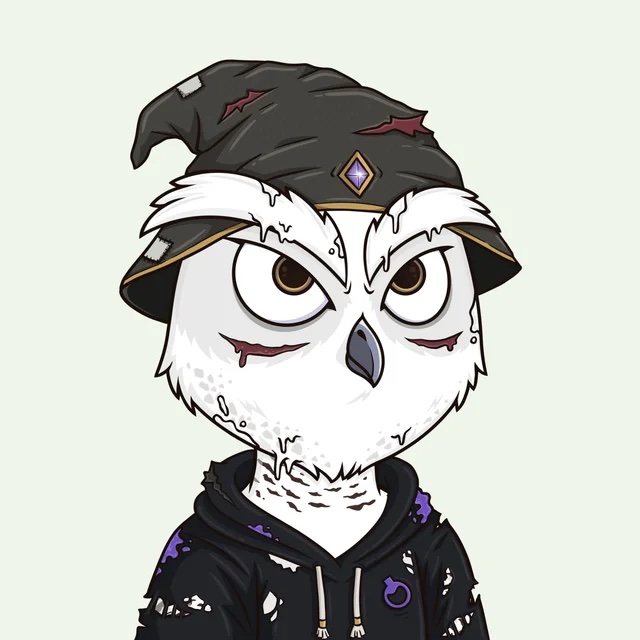Breaking Down The Lost Miners — The Final NFT Collection Minted Before Ethereum’s Merge
November 8, 2022 - 8 min read
The Lost Miners is a collection of 10,000 NFTs whose contract was deployed on the Penultimate Block on the Ethereum blockchain and is the Final Proof of Work collection with all 10,000 tokens minted and staked to the contract via a Proof of Work consensus mechanism. In this article, I detail the backstory of that collection, its founder Jeff French and its significance in blockchain history.

The Ethereum blockchain has a market cap (the total value of a cryptocurrency’s circulating supply) of $165.8 billion, making it the second most valuable blockchain behind Bitcoin.
Up until September 15th, 2022, Ethereum used a Proof-of-Work to reach a consensus to validate transactions on the blockchain.
The problem and criticism of Ethereum were that proof-of-work consensus relies on computing power, which is a significant drain on energy, especially due to the blockchain’s popularity.
By switching to Proof-of-Stake on September 15th, the energy consumption of the Ethereum blockchain was reduced by a whopping 99.95%.
The innovation of the Ethereum blockchain was preserved through the evolution of how decentralized validation and consensus of transactions could be managed without a big suck on energy.
Whether it is fully appreciated now or not, this was a historically significant event for the blockchain.
And I had the opportunity to speak with entrepreneur Jeff French about why it was so important that he and his team created the final collection of 10,000 NFTs on Ethereum’s Proof-of-Work Mechanism: The Lost Miners of Ether.
In this article I’m going to cover:
Jeff’s background and entry into the web3 / NFT space
BlokPax — Jeff’s first project that leveraged NFTs and blockchain technology and how it onboarded and introduced new people to web3
A detailed breakdown of what the Lost Miners NFTs are, why Jeff invested time and resources to creating the project the right way, and what he sees for the project’s future
Closing Thoughts
Let’s dive in!
Getting to Know Jeff French — The Founder Behind Blokpax and The Lost Miners of Ether
Whenever I write about an NFT project, especially one that has historical relevance, I like to understand the background, goals, and perspective of that project founder (and it’s important I share that with you, my readers).
“I’ve been a tech entrepreneur since the original dot com bubble at the end of the 90s … and I have been a collector of things my entire life.” — Jeff French
After spending 45 minutes with Jeff, I could tell he really “gets” the web3 space from the cultural standpoint, the transactional standpoint, the ethos behind blockchain technology, and everything that comes with it.
Jeff has been a tech entrepreneur through the original dot-com bubble at the end of the 1990s, through the Great Recession of 2008, and through to today.
He has deep experience in traditional web 1.0 and web 2.0 businesses, but he told me that he had been a collector of things all his life.
After naturally getting into sports card collecting (and staying through the boom and busts of that category), he very quickly recognized and appreciated the new narrative forming around digital ownership.
He dove in feet first and was a buyer of a CryptoPunks NFT and Bored Ape Yacht Club on the earlier side of adoption before NFTs exploded.
Jeff said that as he dove deeper into the underlying technology of blockchains in 2021, he “came to this fundamental belief that the technology would have so many applications in our life, and [he] felt that [he] could bring value to it and create from it.”
He went on to elaborate:
“From a fundamental belief, when I looked at the space, I saw an opportunity for ownership in ways that we have never been able to have ownership before. Certain things that in the past, you may have a right to something in a ledger or a database, but those databases are mutable.” — Jeff French
Jeff really understood the blockchain and NFTs from the collector's perspective, but he also saw an opportunity to enter web3 from an entrepreneur’s perspective.
Launching BlokPax to Combine Traditional Collecting With NFTs

Source: BlokPax.com
Jeff launched BlokPax.com after realizing he could utilize a traditional sweepstakes business model but pair it with NFTs that allowed him and his team to create “novel games” that would allow people to win prizes by playing various games.
When you look at the history of other collectibles, like sports cards, there was always a different layer to introduce a new concept.
For example, the earliest sports cards were originally placed in cigarette boxes and eventually were packaged with bubble gum.
It was a way to use something familiar and popular as an entryway for a new category of product (similar to Reddit issuing NFTs in the form of avatars on their platform).
Jeff deployed a similar concept by using sweepstakes (something people are familiar with) and gamified the user’s experience through that sweepstakes:
“We gave away over $6 million worth of prizes to onboard people into web3 and now we have this group of people who have learned web3 … so that when we create innovative things, we have this universe that wants to consume them.” — Jeff French
Blokpax took something familiar — opening sports card packs — to bring value to an audience, help them better understand web3, and help earn him a userbase that, when he decided to launch something else, he had a built-in audience.
This was an important strategy for when he decided to launch The Lost Miners.
Introducing The Lost Miners of Ether: The Final 10,000 NFT Collection on Ethereum’s Proof-of-Work Mechanism

The Lost Miners is a collection of 10,000 NFTs whose contract was deployed on the Penultimate Block on the Ethereum blockchain and is the Final Proof of Work collection with all 10,000 tokens minted and staked to the contract via a Proof of Work consensus mechanism.
The artwork is 24x24 pixel art by artist Charles Pate and is fully on-chain so that it will live on for the lifetime of the Ethereum blockchain.
You can check out the collection on OpenSea here.
Note: There was a singular NFT minted on the final block before the Ethereum merge. There are ways for people to bribe miners to control blocks and in this case, someone paid 30 ETH to mint an NFT from an existing contract.
Based on Jeff’s history as an entrepreneur, collector and someone who deeply aligns with the ethos of crypto/web3/NFTs, the creation of the Lost Miners was a genuine effort to document a moment of important history on one of the most important blockchains’ in the world.
The Lost Miners contract was deployed on the penultimate (second-to-last) block of Ethereum before the merge. Jeff explained that he wanted the way this project was executed to hold up to even the most intense scrutiny.
He could have created a contract beforehand and focused only on minting the NFTs during the final block of the merge, but that wouldn’t have been as historically significant and technologically sound.
His team thoughtfully architected the deployment of this project to ensure that the way it was done would be widely respected by all those involved with web3 (which is important for the NFT collection to be revered in the future).
Jeff also ensured that the NFTs were a free claim.
You could have minted a Lost Miner for $20 (in gas fees) and they are now selling for between $250 — $275 (0.158 ETH floor price on OpenSea).
Much like CryptoPunks were minted for free in 2017, Jeff wanted this to be part of the narrative with the Lost Miners and an acknowledgment to let the history and execution speak for itself.
On that same line of questioning, when asked about a roadmap, Jeff made it clear that there is no roadmap to the project.
He went on to explain that some of the most popular (and expensive) trading cards in the world (think 1952 Topps Mickey Mantle and 1947 Leaf Jackie Robinson) are valued independently of the success of the companies that produced those cards.
“The Lost Miners live on-chain forever, but they’re not dependent on us — we want to facilitate a vibe of collectors who enjoy their Lost Miners the same way people collect 52 Topps and collect with each other.” — Jeff French
Jeff did say he will stand up a Discord for The Lost Miners collectors to have a place to call home.
Closing Thoughts
The Lost Miners is a fascinating project created in a specific way during one of the most significant events in the history of one of the most widely-used blockchains in the short history of the technology.
It was executed by an experienced entrepreneur who “gets it” and did not cut corners when it came to making sure top-to-bottom the project would stand the test of time for historical validity.
But what struck me more than anything else was Jeff empathizing with the level-playing field created by the blockchain and web3:
“My mom was a byproduct of segregation in the south by Jim Crow law. Her education was minimal at best. I was the first person to go to college in my family. I came from a dirt poor family, and seeing web3, it was an open and level playing field where people aren’t measured. When you’re on a ledger and the code is the law for when the contract interacts and what it does, there’s no room for screwing people and that’s an ethos of crypto that really resonated with me.” — Jeff French
I can’t think of a more honest signal of dedication to doing the right things to move the space forward, and The Lost Miners of Ether NFT project is part of Jeff’s legacy fueled by that desire.
The project is also part of Ethereum’s legacy as a popular blockchain that’s been a central part of paradigm-shifting technology.
The Lost Miners is commemorative, thoughtful, and regardless of what happens, a key memento from a key piece of blockchain history.
Newsletter
Enter your email address below to subscribe to my newsletter
latest posts





